Welcome to Iringa, Tanzania, the home of some of the most beautiful birds in the world. From vibrant parrots to majestic eagles, Iringa is a paradise for bird watchers and enthusiasts alike.
With its vast open savannahs, lush forests, and diverse habitats, Iringa is home to over 600 species of birds. Whether you’re looking to observe a rare species or just want to enjoy the sights and sounds of nature, you won’t be disappointed.
So grab your binoculars and let’s go bird-watching in Iringa!
1. Helmeted Guineafowl
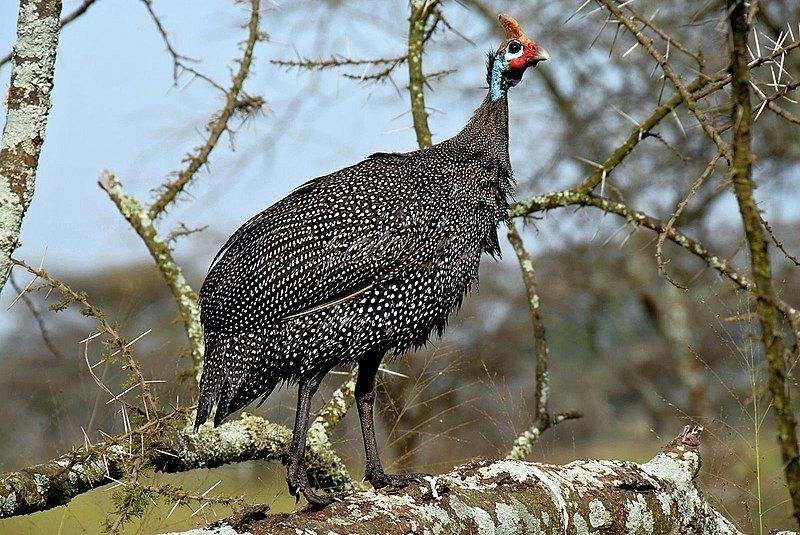
The helmeted guineafowl is a unique bird, belonging to the Numididae family and the only member of the genus Numida.
It is native to Africa, primarily south of the Sahara, but it has been widely introduced and domesticated in other parts of the world, including the West Indies, North America, Colombia, Brazil, Australia, and Europe.
The helmeted guineafowl is easily recognizable by its distinctive helmet-like crest, and is an omnivorous bird that feeds on insects, seeds, fruits, and small animals.
In addition to being a popular pet, the helmeted guineafowl is also hunted for its meat and feathers, which are used in traditional African clothing and decorations.
The domesticated birds are often kept in large flocks in parks and gardens, but wild populations can still be found in parts of Africa.
The helmeted guineafowl is an important part of African culture and has been celebrated in art and literature for centuries.
| Kingdom | Animalia |
| Phylum | Chordata |
| Class | Aves |
| Order | Galliformes |
| Family | Numididae |
| Genus | Numida |
| Species | N. meleagris |
2. Loveridge’s Sunbird
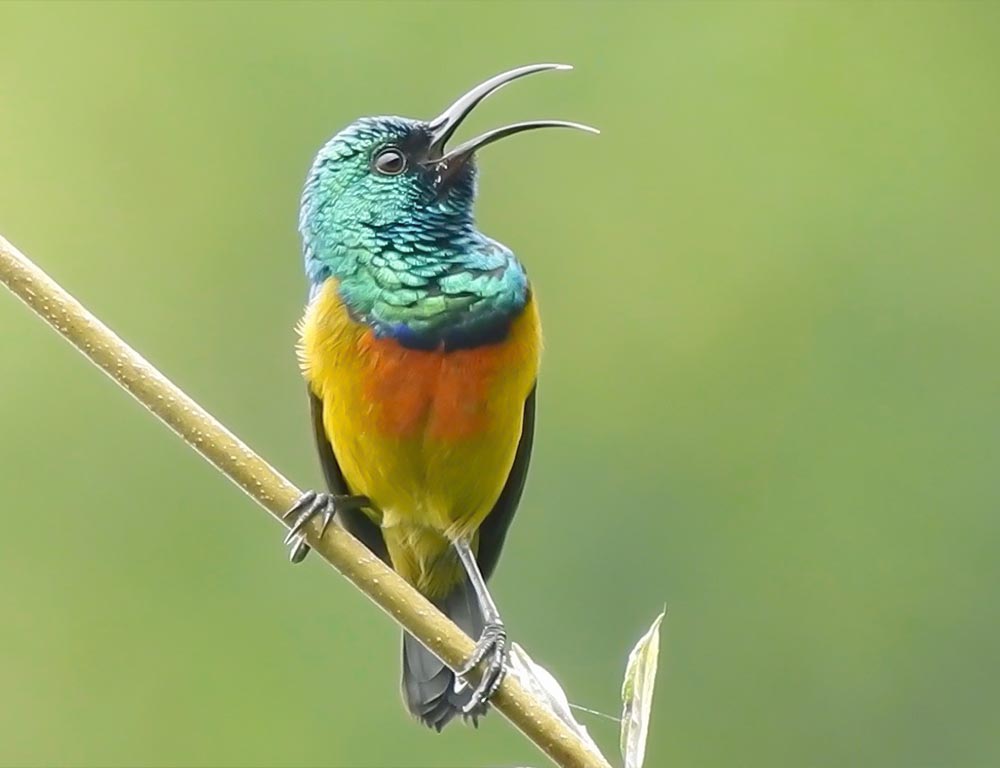
Loveridge’s sunbird is a species of bird that belongs to the family Nectariniidae. This species is only found in Tanzania, where it inhabits subtropical or tropical moist montane forests.
Unfortunately, this species is threatened by the loss of its natural habitat, which is why it is listed as an endangered species. The common name of this species, Loveridge’s sunbird, pays homage to the American herpetologist Arthur Loveridge.
Loveridge was a renowned herpetologist who conducted extensive fieldwork in Africa and dedicated his life to the study of reptiles and amphibians.
His work and research helped to enlighten the world about the importance of conservation and protecting endangered species, of which Loveridge’s sunbird is an example.
The Latin binomial of the species, Cinnyris loveridgei, was also named after Arthur Loveridge in recognition of his dedication to the field of herpetology.
| Kingdom | Animalia |
| Phylum | Chordata |
| Class | Aves |
| Order | Passeriformes |
| Family | Nectariniidae |
| Genus | Cinnyris |
| Species | C. loveridgei |
3. Grey-Breasted Spurfowl
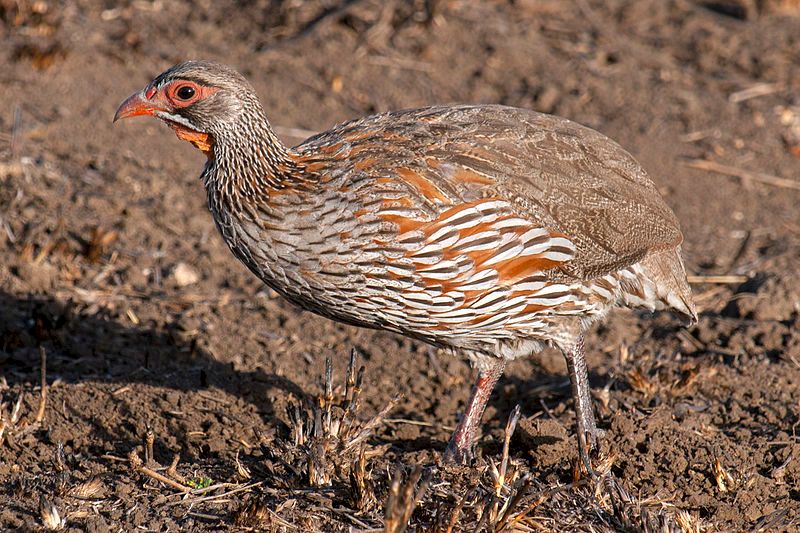
The Grey-breasted Spurfowl, also known as the Grey-breasted Francolin, is a species of bird belonging to the Phasianidae family. It is native to Tanzania and is known to exist only in this region.
This species of bird was scientifically described by the German ornithologist Anton Reichenow in 1887 and given the current scientific name of Pternistis Rufopictus.The Grey-breasted Spurfowl is a medium-sized bird with a greyish-brown head, breast, and back.
The underparts are white or pale grey, and the wings are barred in grey and black. The legs and feet are pale yellow. They are mainly terrestrial and consume seeds, fruits, and insects.
They inhabit a variety of habitats, including grasslands, moist savannas, and open woodlands. The Grey-breasted Spurfowl is listed as Least Concern by the International Union for Conservation of Nature, as it is not facing any major threats.
It has a relatively wide range and is not believed to be declining at a significant rate. It is also known to be tolerant of some human disturbance, making it a relatively easy species to study and observe.
| Kingdom | Animalia |
| Phylum | Chordata |
| Class | Aves |
| Order | Galliformes |
| Family | Phasianidae |
| Genus | Pternistis |
| Species | P. rufopictus |
4. Common Ostrich
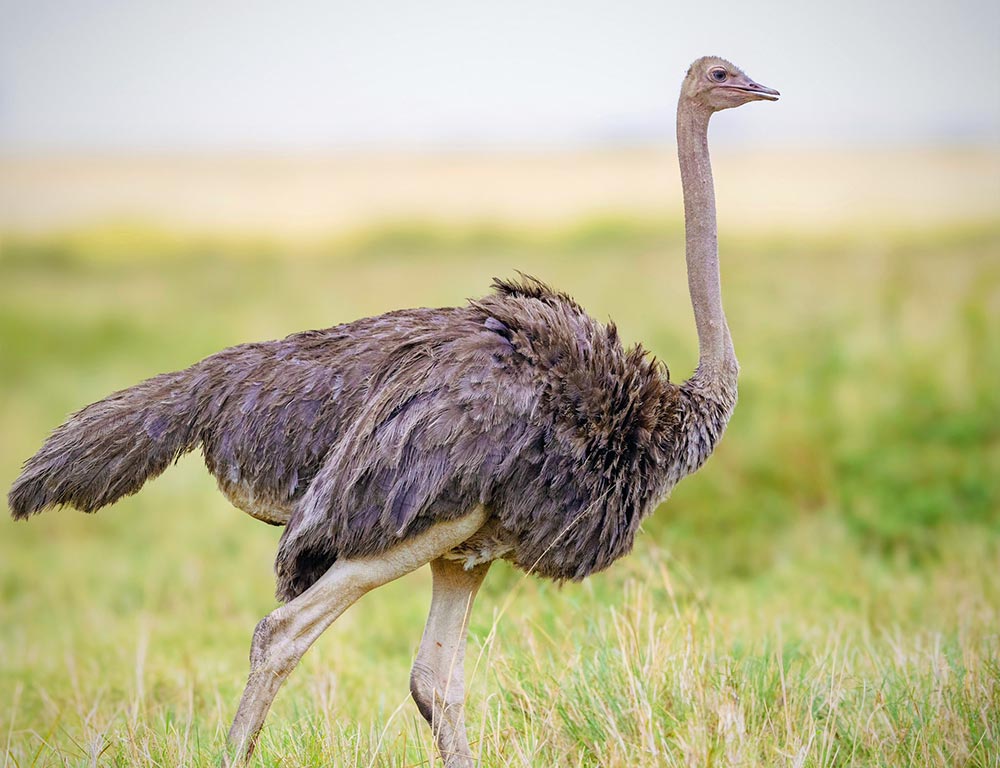
The common ostrich is a large, flightless bird native to Africa. It is the largest living species of bird, weighing up to 300 pounds and standing over 8 feet tall. Ostriches have powerful, long legs and can run up to 43 miles per hour.
They are also capable of swimming, although they rarely do so in the wild. Ostriches are herbivorous, and their diet consists mainly of leaves, flowers, fruits, and seeds. Ostriches live in large, open areas, such as savannahs, deserts, and grasslands.
They form small family groups, and the male is responsible for defending the group’s territory. Females lay their eggs in a communal nest, and both parents take turns incubating them. The eggs take around 40 days to hatch.
There are two extant species of ostriches, the common ostrich and the Somali ostrich. The common ostrich is found in most of Africa, while the Somali ostrich is found in East Africa. Both species are members of the genus Struthio, which is part of the ratite order of birds.
Ratites are flightless birds with flat, beakless faces and small wings.
| Kingdom | Animalia |
| Phylum | Chordata |
| Class | Aves |
| Order | Struthioniformes |
| Family | Struthionidae |
| Genus | Struthio |
| Species | S. camelus |
5. White-Tailed Tropicbird
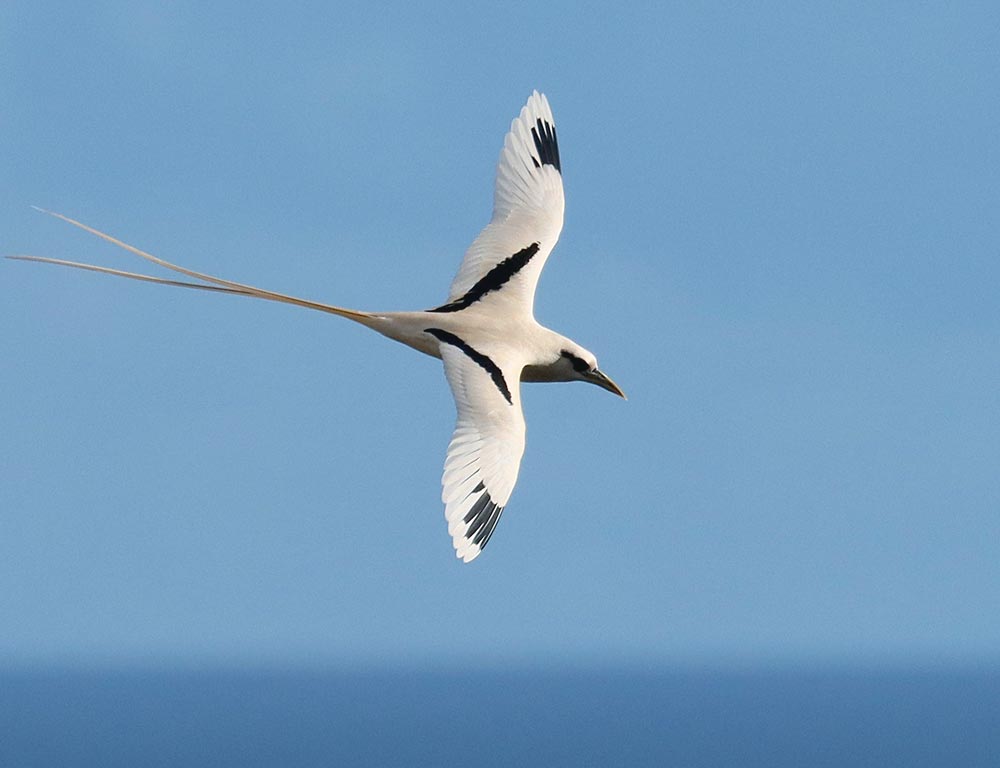
The white-tailed tropicbird is a unique seabird that can be found in the tropical oceans of the Atlantic, Pacific, and Indian Oceans.
It is the smallest of the three closely related species of tropicbirds and is the smallest member of the order Phaethontiformes, which also includes other seabirds such as frigatebirds and tropicbirds.
The white-tailed tropicbird is a striking bird, with a long, white tail and a black eye stripe that runs down its neck and across its back. It has a white head and neck, a long white tail, and a bright yellow bill.
Its wings are black on the upper side and white on the lower side. Its legs and feet are pink. The white-tailed tropicbird is a mainly coastal species, often found near coral reefs or seagrass beds.
It is a strong and agile flier, capable of soaring to great heights and covering long distances in search of food. Its diet consists mainly of flying fish, squid, and crustaceans.
It typically feeds in flocks with other seabirds, such as boobies and terns. The white-tailed tropicbird is an important species in the tropical oceans. Its presence in an area is an indicator of a healthy ecosystem.
Unfortunately, this species is threatened by habitat destruction, fishing activities, and plastic pollution, which can entangle the birds. Conservation efforts are needed to ensure the survival of the white-tailed tropicbird.
| Kingdom | Animalia |
| Phylum | Chordata |
| Class | Aves |
| Order | Phaethontiformes |
| Family | Phaethontidae |
| Genus | Phaethon |
| Species | P. lepturus |
6. Turacos
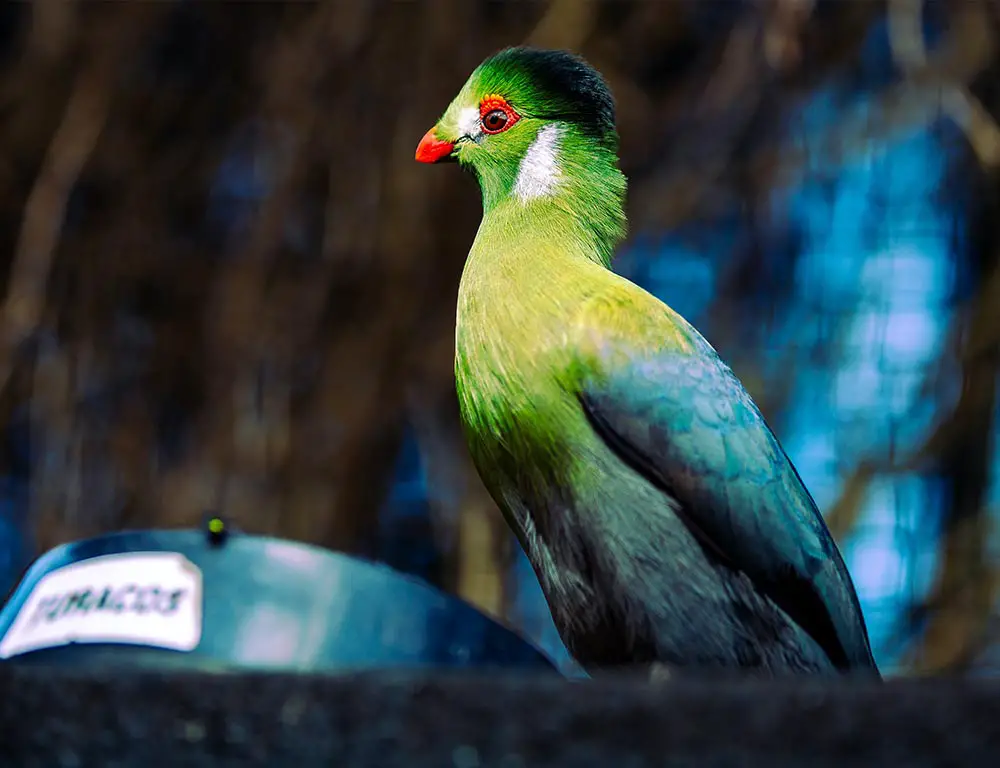
The Musophagidae family includes two types of birds, the turacos and the go-away birds. In southern Africa, both birds are known as loeries.
What sets them apart from other birds is that they are semi-zygodactylous, meaning their fourth toe can be switched back and forth between pointing forward and backward. This is an adaptation that helps them grip onto branches and perch on them.
The turacos are mainly plant-eaters, consuming berries, nuts, and fruits. This adaptation is further aided by their strong beaks and curved claws which help them grasp onto their food.
The go-away birds, on the other hand, primarily feed on insects, making them more of a carnivore. Both birds share similar characteristics, such as their overall shape and size. They are both brightly colored, with long tails, and wings that are typically the same length.
They have thick beaks and strong legs. The turacos and go-away birds are both unique birds because of their semi-zygodactylous ability. This adaptation helps them to climb around on branches and get to their food more easily.
It also aids them in their ability to fly, giving them greater control over their flight path.
| Kingdom | Animalia |
| Phylum | Chordata |
| Class | Aves |
| Clade | Otidimorphae |
| Order | Musophagiformes |
| Family | Musophagidae |
7. Tanzanian Red-Billed Hornbill
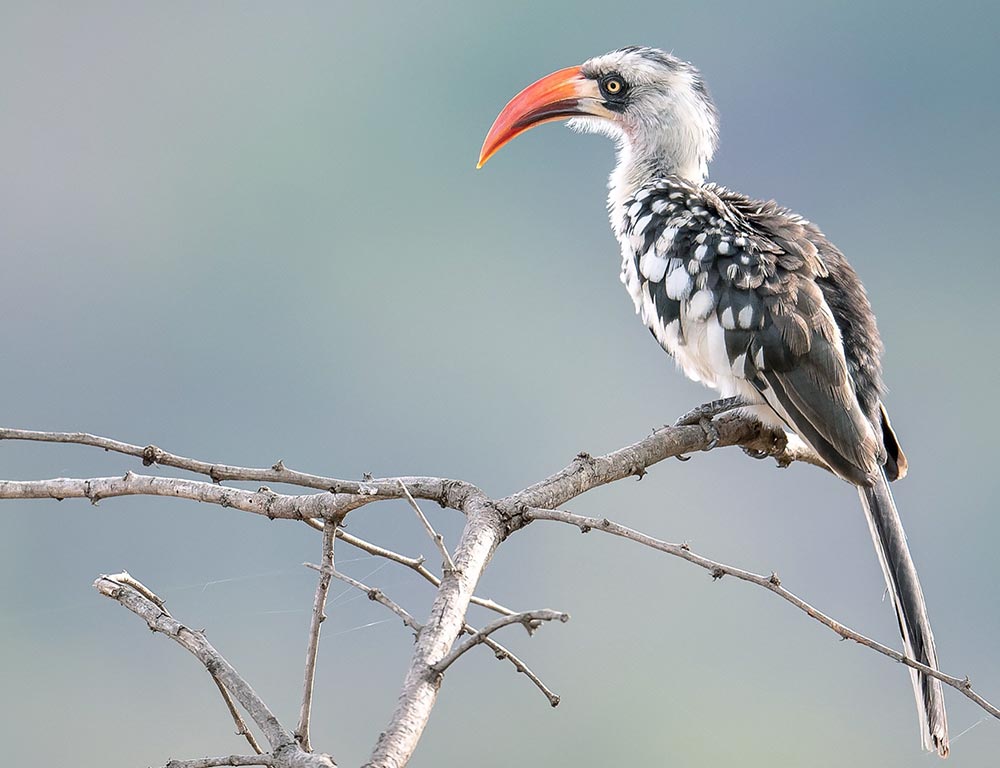
The Tanzanian red-billed hornbill is a species of hornbill in the family Bucerotidae and is found in central Tanzania. This species is unique in that all five red-billed hornbills were formerly considered to be the same type of species or conspecific.
This means that they were thought to be a single species, even though they are now known to be five separate species. This is because the five species have a very similar appearance and behavior.
Furthermore, all five of these species inhabit the same area and have similar dietary preferences. Even though they were once considered conspecific, the Tanzanian red-billed hornbill is now recognized as its species.
It has a distinctive red bill and is typically found in open woodlands and savannas. They feed primarily on insects, small vertebrates, and fruits.
The red-billed hornbill is an important seed disperser in its habitat, as it can spread the seeds of fruits and other plants in the area. Additionally, the red-billed hornbill is a social species, often seen in pairs or small groups.
The Tanzanian red-billed hornbill is an important species in the region and is currently listed as Least Concern on the IUCN Red List. However, its population is still declining due to deforestation and habitat loss.
As a result, conservation efforts are needed to protect this species and its unique habitat.
| Kingdom | Animalia |
| Phylum | Chordata |
| Class | Aves |
| Order | Bucerotiformes |
| Family | Bucerotidae |
| Genus | Tockus |
| Species | T. ruahae |
8. Rufous-Winged Sunbird
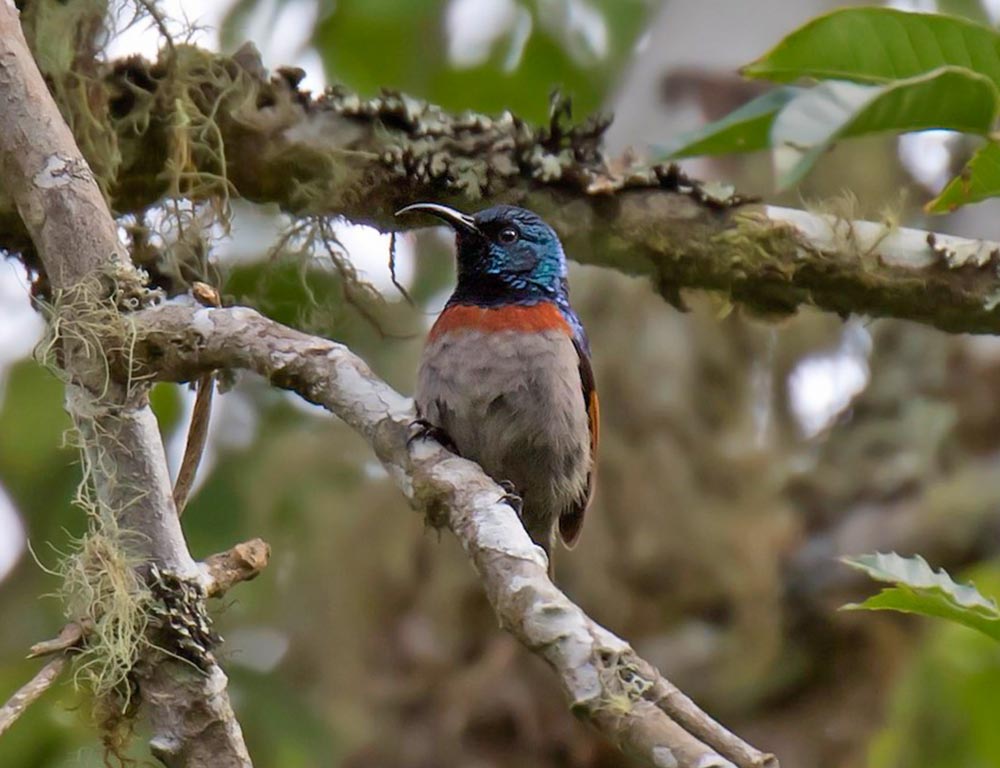
The rufous-winged sunbird is a species of bird that is found only in Tanzania. It belongs to the family Nectariniidae and is mostly found in moist montane forests.
Unfortunately, its natural habitat is being threatened due to the loss of forests due to human activities such as urbanization and deforestation. As a result, the rufous-winged sunbird is at risk of becoming endangered.
To ensure the survival of this species, it is important to protect its natural habitat and to create laws to protect forests from destruction. Additionally, it is important to educate people on the importance of preserving the environment and its wildlife.
Only then can we ensure the future of the rufous-winged sunbird and other species of wildlife.
| Kingdom | Animalia |
| Phylum | Chordata |
| Class | Aves |
| Order | Passeriformes |
| Family | Nectariniidae |
| Genus | Cinnyris |
| Species | C. rufipennis |
9. Long-Crested Eagle
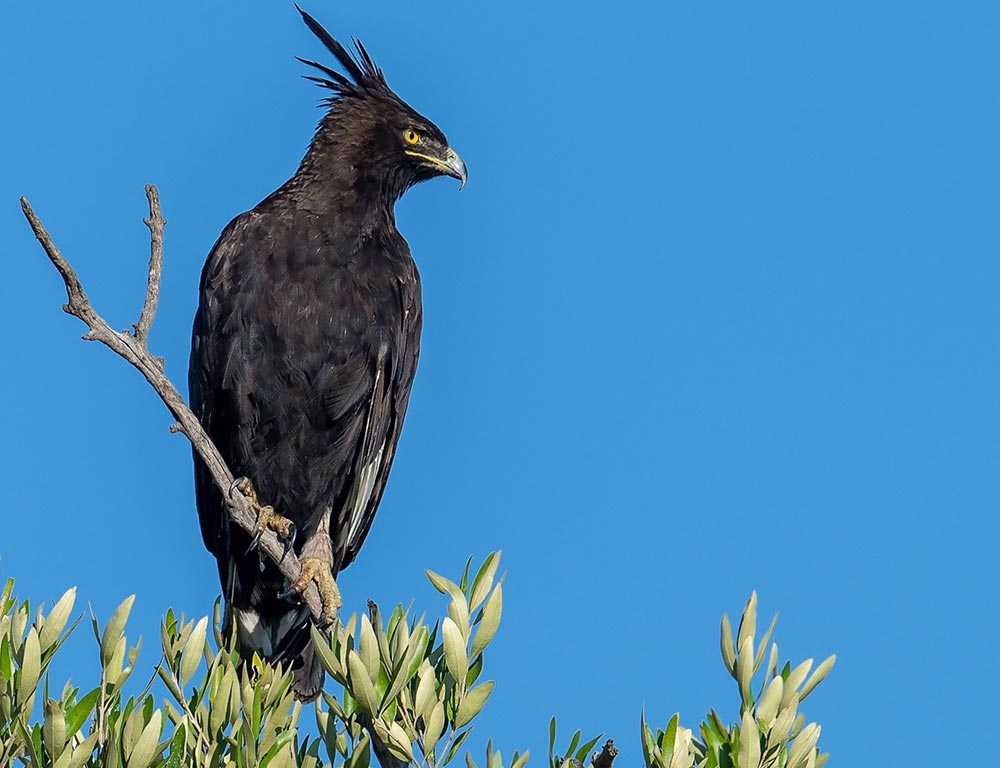
The long-crested eagle is a bird of prey native to Africa. It is a member of the Accipitridae family, a group of raptors that includes other eagles, hawks, and kites. The long-crested eagle is a unique bird, as it is the only species in its genus, Lophaetus.
This species is recognized by its distinctive crest of long feathers. The crest is made up of long, shaggy feathers that create a unique and identifiable look.
The crest feathers are believed to help the eagle better detect prey from a distance, allowing it to hunt more efficiently.
The long-crested eagle is one of the most impressive birds of prey in the world, and its unique crest is part of what makes it so remarkable.
| Kingdom | Animalia |
| Phylum | Chordata |
| Class | Aves |
| Order | Accipitriformes |
| Family | Accipitridae |
| Genus | Lophaetus |
| Species | L. occipitalis |
10. Iringa Akalat
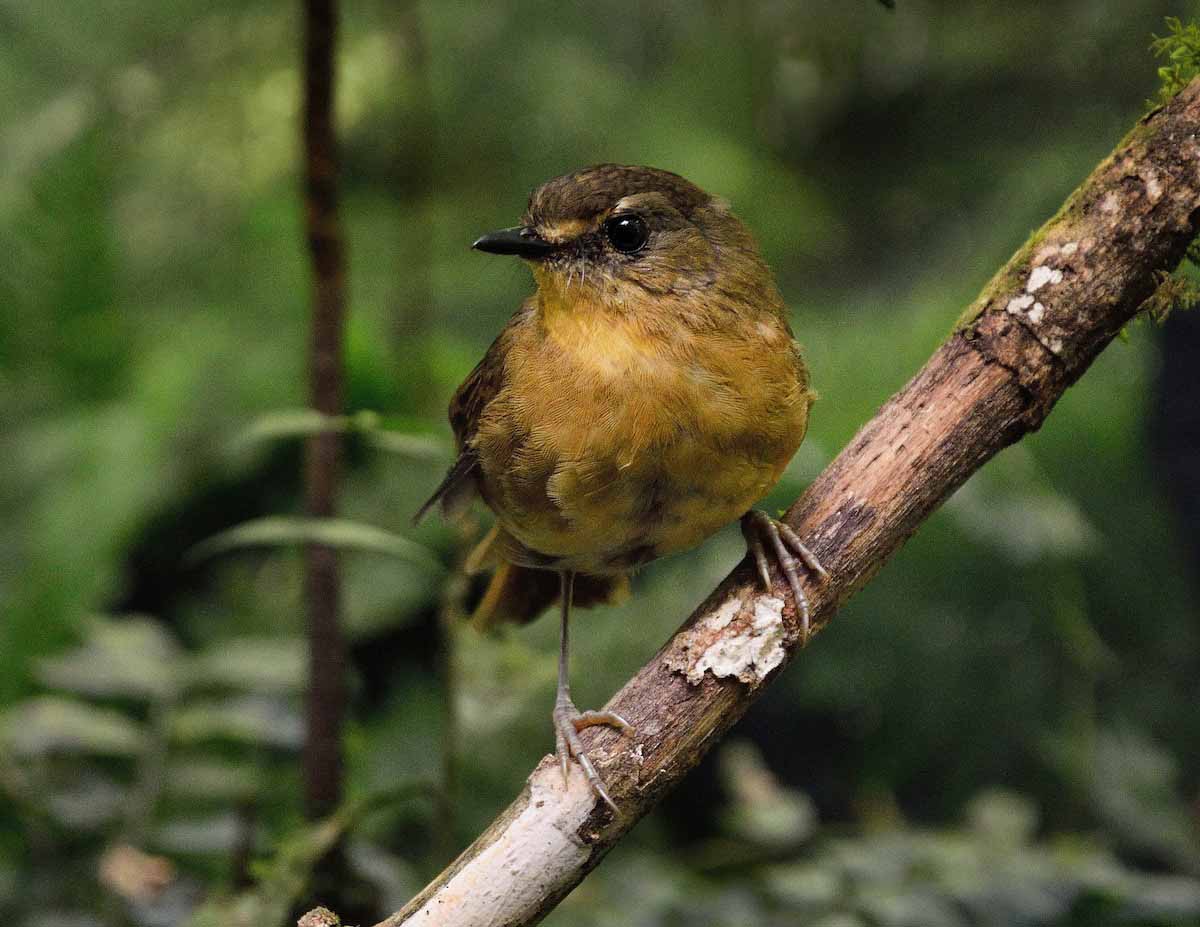
The Iringa akalat is a species of bird that is native to Tanzania’s Iringa Region. It belongs to the Muscicapidae family, which is commonly referred to as the Old World flycatcher family.
This species prefers to live in subtropical or tropical montane forests, which are forests located in mountainous regions. Unfortunately, the Iringa akalat species is currently threatened due to its habitat being destroyed by human activity.
This poses a serious threat to the bird population, as habitat loss is a major contributor to species extinction. Habitat loss is caused by human activities such as deforestation, urbanization, and industrialization.
Trees are cut down to make room for cities, factories, and other forms of development, making it difficult for the Iringa akalat to find a place to live.
The destruction of its natural habitat also reduces the amount of food available to the bird, as well as decreases the amount of nesting and breeding sites.
All of these factors put the species at risk of becoming extinct. To protect the Iringa akalat, conservation efforts must be made to ensure the preservation of its natural habitat.
Efforts should be made to protect the remaining forests in the Iringa Region, as well as replant trees in areas that have been deforested. Additionally, land-use policies should be put in place to limit the destruction of the bird’s habitat for development purposes.
Finally, more research should be done to better understand the species and its habitat needs. Through these efforts, we can ensure the safety of the Iringa akalat and other threatened species in the region.
| Kingdom | Animalia |
| Phylum | Chordata |
| Class | Aves |
| Order | Passeriformes |
| Family | Muscicapidae |
| Genus | Sheppardia |
| Species | S. lowei |
Conclusion
Birds are an important part of the Iringa ecosystem. They provide food, pollinate plants, help spread seeds, and keep insect populations in check. The presence of birds in Iringa is a sign of a healthy environment and one that is worth preserving.
With the help of local communities and conservation efforts, Iringa can continue to enjoy the many benefits of its bird population.